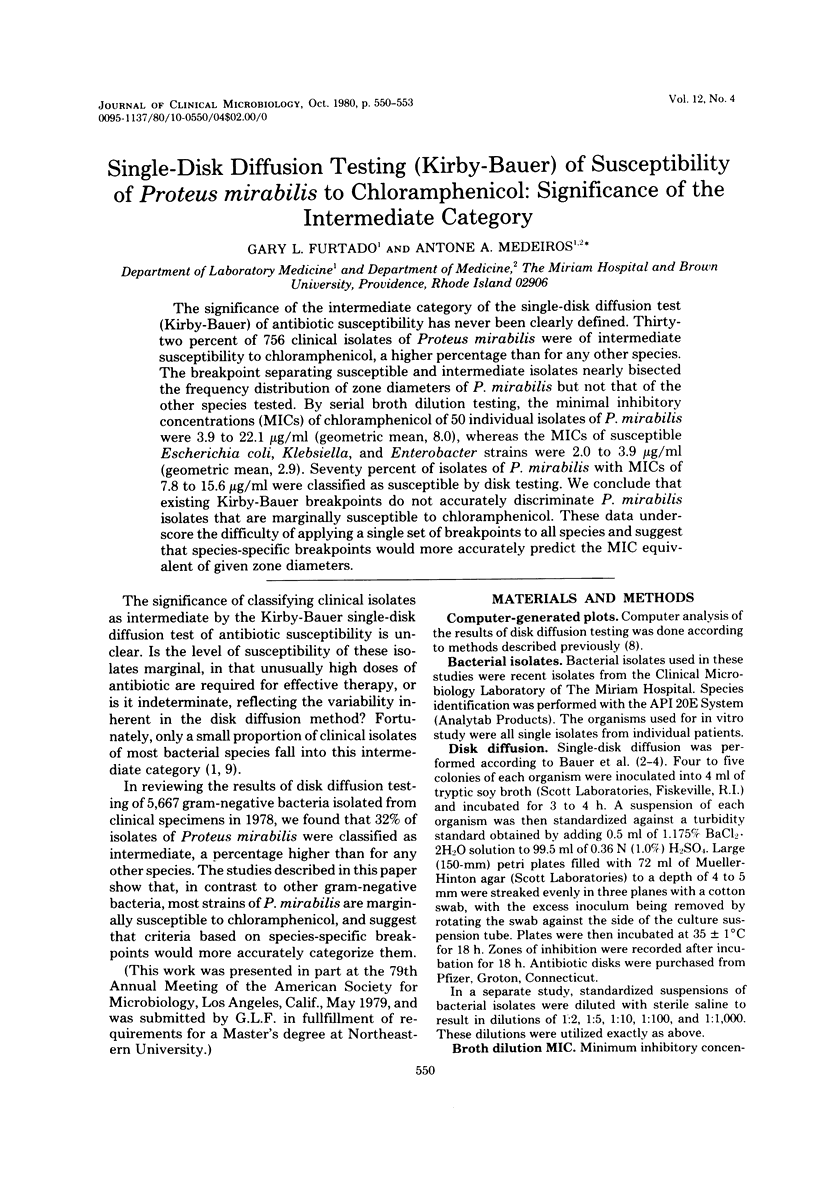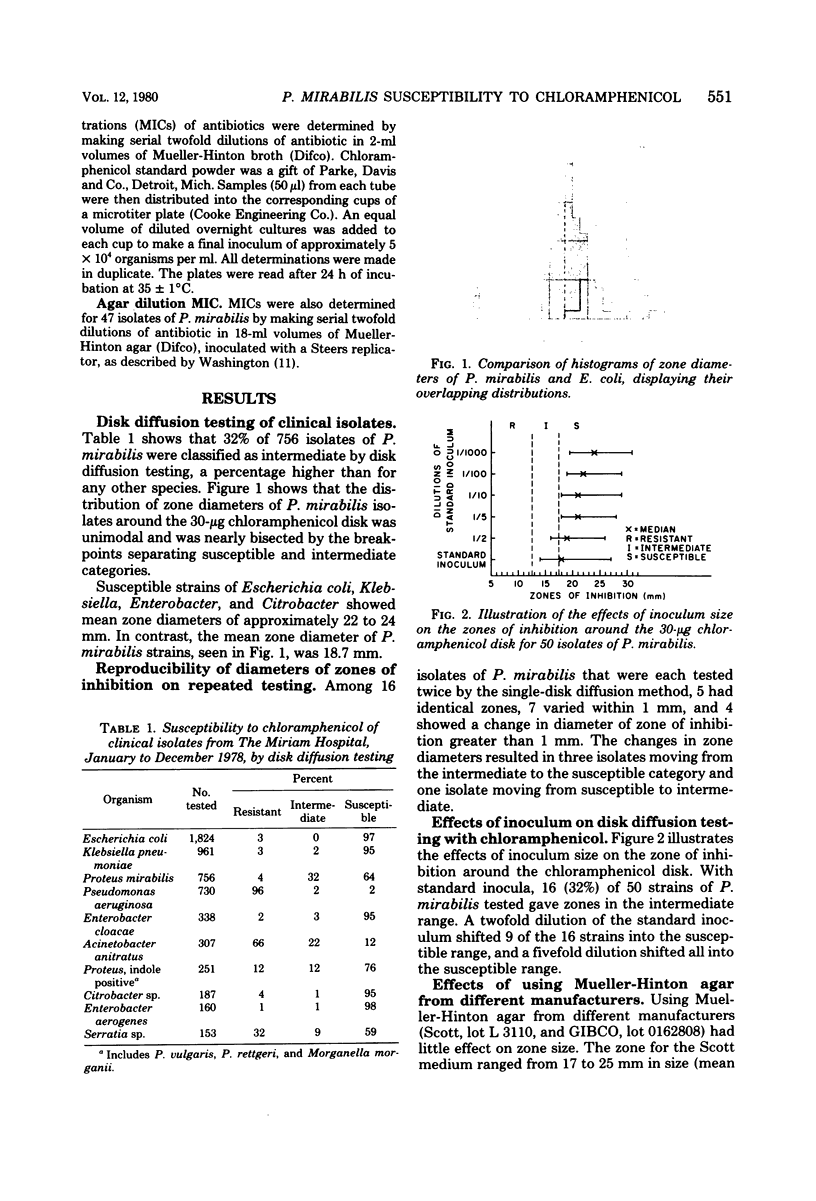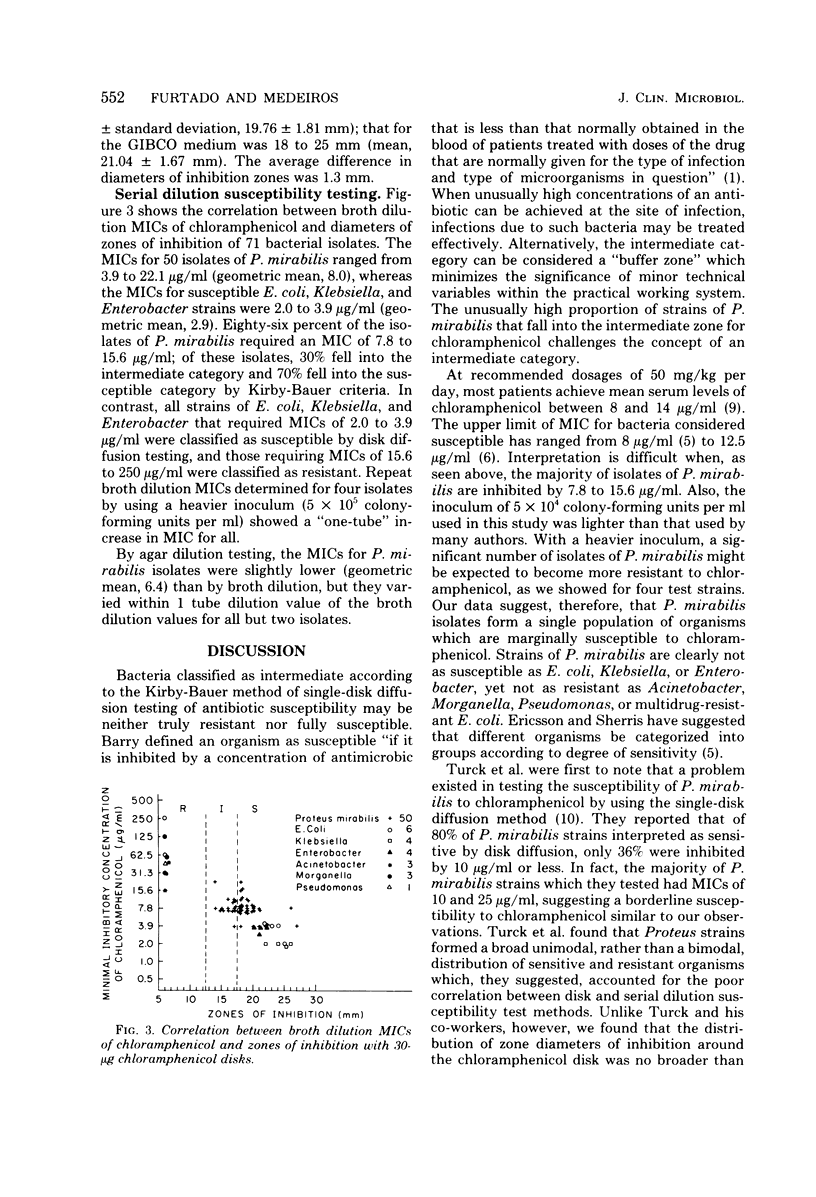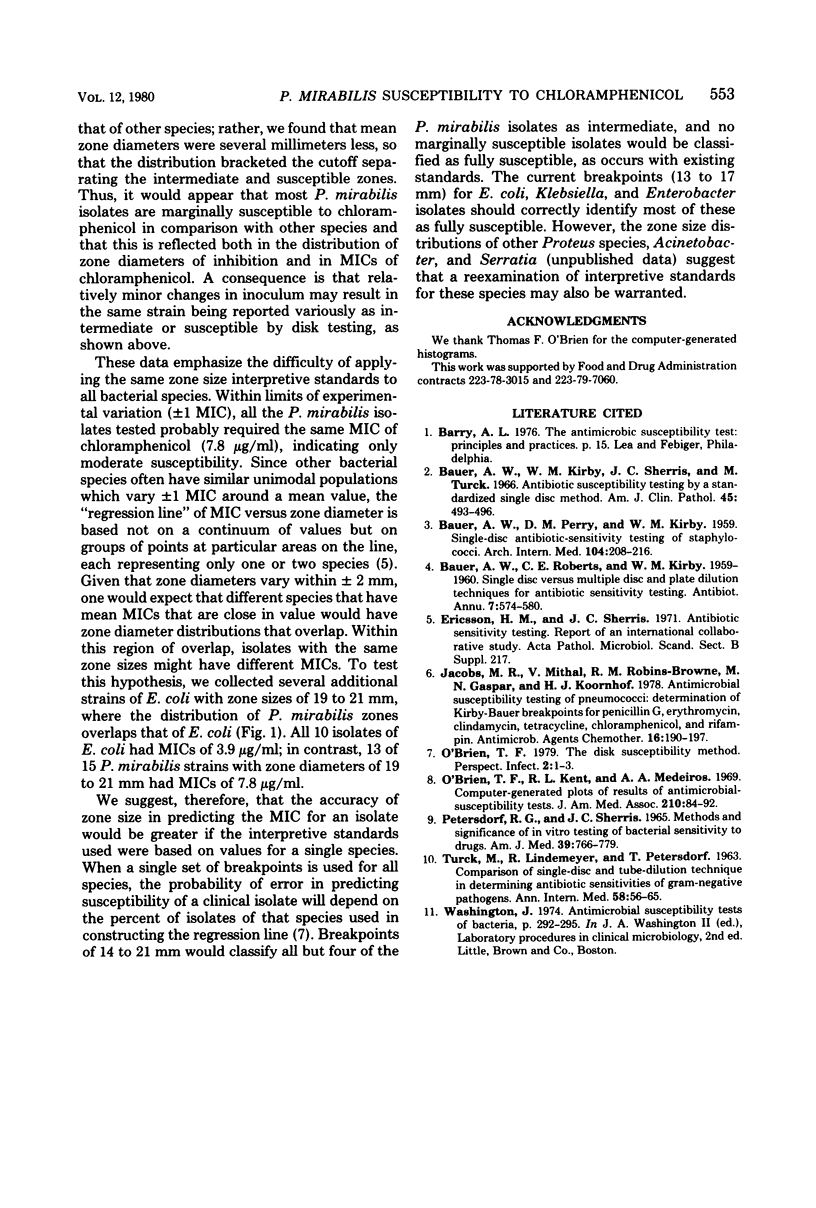Abstract
The significance of the intermediate category of the single-disk diffusion test (Kirby-Bauer) of antibiotic susceptibility has never been clearly defined. Thirty-two percent of 756 clinical isolates of Proteus mirabilis were of intermediate susceptibility to chloramphenicol, a higher percentage than for any other species. The breakpoint separating susceptible and intermediate isolates nearly bisected the frequency distribution of zone diameters of P. mirabilis but not that of the other species. The breakpoint separating susceptible and intermediate isolates nearly bisected the frequency distribution of zone diameters of P. mirabillis but not that of the other species tested. By serial broth dilution testing, the minimal inhibitory concentrations (MICs) of chloramphenicol of 50 individual isolates of P. mirabilis were 3.9 to 22.1 micrograms/ml (geometric mean, 8.0), whereas the MICs of susceptible Escherichia coli, Klebsiella, and Enterobacter strains were 2.0 to 3.9 micrograms/ml (geometric mean, 2.9). Seventy percent of isolates of P. mirabilis with MICs of 7.8 to 15.6 micrograms/ml were classified as susceptible by disk testing. We conclude that existing Kirby-Bauer breakpoints do not accurately discriminate P. mirabilis isolates that are marginally susceptible to chloramphenicol. These data underscore the difficulty of applying a single set of breakpoints to all species and suggest that species-specific breakpoints would more accurately predict the MIC equivalent of given zone diameters.
Full text
PDF



Images in this article
Selected References
These references are in PubMed. This may not be the complete list of references from this article.
- BAUER A. W., PERRY D. M., KIRBY W. M. Single-disk antibiotic-sensitivity testing of staphylococci; an analysis of technique and results. AMA Arch Intern Med. 1959 Aug;104(2):208–216. doi: 10.1001/archinte.1959.00270080034004. [DOI] [PubMed] [Google Scholar]
- BAUER A. W., ROBERTS C. E., Jr, KIRBY W. M. Single disc versus multiple disc and plate dilution techniques for antibiotic sensitivity testing. Antibiot Annu. 1959;7:574–580. [PubMed] [Google Scholar]
- Bauer A. W., Kirby W. M., Sherris J. C., Turck M. Antibiotic susceptibility testing by a standardized single disk method. Am J Clin Pathol. 1966 Apr;45(4):493–496. [PubMed] [Google Scholar]
- Ericsson H. M., Sherris J. C. Antibiotic sensitivity testing. Report of an international collaborative study. Acta Pathol Microbiol Scand B Microbiol Immunol. 1971;217(Suppl):1+–1+. [PubMed] [Google Scholar]
- Jacobs M. R., Mithal Y., Robins-Browne R. M., Gaspar M. N., Koornhof H. J. Antimicrobial susceptibility testing of pneumococci: determination of Kirby-Bauer breakpoints for penicillin G, erythromycin, clindamycin, tetracycline, chloramphenicol, and rifampin. Antimicrob Agents Chemother. 1979 Aug;16(2):190–197. doi: 10.1128/aac.16.2.190. [DOI] [PMC free article] [PubMed] [Google Scholar]
- O'Brien T. F., Kent R. L., Medeiros A. A. Computer-generated plots of results of antimicrobial-susceptibility tests. JAMA. 1969 Oct 6;210(1):84–92. [PubMed] [Google Scholar]
- Petersdorf R. G., Sherris J. C. Methods and significance of in vitro testing of bacterial sensitivity to drugs. Am J Med. 1965 Nov;39(5):766–779. doi: 10.1016/0002-9343(65)90096-3. [DOI] [PubMed] [Google Scholar]
- TURCK M., LINDEMEYER R. I., PETERSDORF R. G. Comparison of single-disc and tube-dilution techniques in determining antibiotic sensitivities of gram-negative pathogens. Ann Intern Med. 1963 Jan;58:56–65. doi: 10.7326/0003-4819-58-1-56. [DOI] [PubMed] [Google Scholar]



